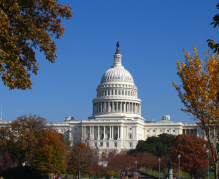Click to view McLaughlin & Associates September 17 2014, National Poll
MEMORANDUM
TO: Interested Parties
FROM: 2017 Project Executive Director Jeff Anderson
SUBJECT: Polling on the 2017 Project’s “Winning Alternative to Obamacare”
I am happy to report on recent polling that suggests Americans are eager to see a conservative alternative to Obamacare and are hungry for repeal.
The nonpartisan and politically neutral Center for Health and Economy (H&E) recently scored the 2017 Project’s Alternative to Obamacare, and McLaughlin & Associates has now polled voters in response to that scoring. H&E said that, versus Obamacare, the 2017 Project’s Alternative would save $1.13 trillion in federal spending from 2014 through 2023, increase the number of people with private health insurance by 6 million, lower premiums in all plan categories for both single and family coverage, improve efficiency in the use of medical resources by 9 percent, and enhance access to desired doctors and hospitals by 4 percent in the employer-based market and 57 percent in the individual market.
H&E’s scoring also said that Obamacare would cover 6 million more people than the 2017 Project’s Alternative overall, leaving 38 million uninsured under Obamacare (or 13 percent of the population) versus 44 million (15 percent of the population) under the Alternative. Obamacare would lead on coverage because, while it would result in 6 million fewer people having private insurance than under the Alternative, it would enroll 12 million more people in Medicaid.
In the wake of H&E’s scoring, McLaughlin & Associates asked likely voters the following poll question (which the 2017 Project commissioned):
“Would you support or oppose repealing and replacing Obamacare with a conservative alternative that would save $1 trillion, reduce premiums, enhance access to doctors, and increase the number of people with private insurance by 6 million, but would cover 6 million fewer people overall because fewer people would be on Medicaid?”
By a margin of 33 points—59 to 26 percent—likely voters said they would support repealing and replacing Obamacare with such an alternative. Not only did most Republicans (77 to 11 percent) and independents (53 to 29 percent) support repeal and replace in this context, but so did most Democrats (49 to 37 percent). Voters under 40 years of age supported repeal and replace by a 2-to-1 margin (60 to 28 percent)—as did women (54 to 27 percent). Catholic voters (more than a quarter of the poll’s respondents) supported repeal and replace by a 3-to-1 margin (66 to 22 percent), as did Hispanic voters (67 to 22 percent). Among those who make between $40,000 and $100,000—in other words, typical Main Street Americans—63 percent supported repealing Obamacare and replacing it with such an alternative, while only 25 percent wanted to keep Obamacare in place.
The poll included 38 percent Democrats and 32 percent Republicans.
Some Obamacare supporters might complain that the poll question highlights several advantages for the conservative alternative, to only one for Obamacare—but this reflects the findings of the scoring, not the phrasing of the question. H&E’s scoring found that Obamacare loses on fiscal costs, premiums, access to doctors, the efficient use of health-care resources, and the number of people who are enrolled in private insurance. Obamacare wins only on overall coverage, and it does so because it puts far more people on Medicaid. The poll question merely reflects this scoring. Moreover, the question explicitly labels the alternative as “conservative”—yet the alternative still prevailed and attracted support from across the political spectrum.
This encouraging result helps highlight that Americans aren’t nearly as concerned as many D.C. insiders about overall coverage numbers. When given a choice between current legislation that would cover more people, and alternative legislation that would lower costs, enhance access to doctors, and increase the number of people with private insurance, they picked the latter in a rout.
This suggests that a well-conceived conservative alternative would be a huge political winner, and that conservatives don’t need to beat Obamacare—which requires people to buy insurance—on coverage numbers. They just need to show they would lower costs, secure liberty, and beat Obamacare on private insurance coverage.
Nor do conservatives need to disrupt the employer-based market—which is good news, since most voters have employer-based insurance. (H&E’s scoring indicates that, while the 2017 Project’s Alternative would particularly help revitalize the individual market, it would also increase the number of people with employer-based insurance.)
It has long been clear that, if given a choice between a well-conceived conservative alternative and Obamacare, Americans would embrace the former and reject the latter. Given that voters never wanted Obamacare in the first place and don’t want it any more now, this new polling should hardly be a surprise. Still, it provides further evidence that the right alternative can not only help bring about the repeal of Obamacare and the passage of real reform, but can do so with overwhelming public support.
